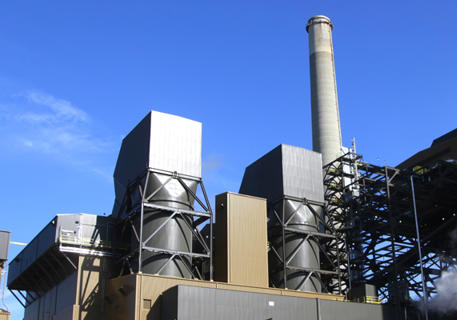Big Stone Plant’s New Air-quality Control System Is Complete

Today the three companies that own Big Stone Plant—our company, Montana-Dakota Utilities Co., and NorthWestern Energy—announced that the plant’s new air-quality control system (AQCS) is commercially operational, meaning the project is complete and the system is reducing emissions in compliance with new federal and state regulations.
Balancing environmental stewardship with cost-effective service
The three-year $384 million project helps plant owners balance their commitments to environmental stewardship with cost-effective service for their customers by enabling them to responsibly generate base-load electricity from coal at Big Stone Plant. The new system reduces nitrogen oxides and sulfur dioxide emissions by approximately 90 percent and mercury emissions by approximately 80 percent.
For all three companies, making environmental upgrades at this plant was less expensive than building a new plant. “Our analysis showed alternatives, such as building a new generation resource, to be more than 30 percent more expensive,” said Otter Tail Power Company President Tim Rogelstad. Otter Tail Power Company operates the plant on behalf of itself and the two other owners.
“Despite challenges along the way, the project was completed on schedule. Because of lower-than-expected procurement and engineering costs, the project cost about $384 million—a 21 percent reduction from the original budget of approximately $490 million. And with workers putting in more than 2.5 million labor hours, our safety record is stellar.” - Otter Tail Power Company President Tim Rogelstad.
Community impact
Big Stone Plant is located near Big Stone City, South Dakota, and in close proximity to Milbank, South Dakota, and Ortonville, Minnesota. Together the three communities have a population of almost 6,000. Beginning early in the planning phase, the AQCS project team reached out to the communities through informational meetings and helped businesses and government entities plan for an influx of workers to the area during the project. In early 2013 the project launched a website to help workers coming to the area find housing, laundry, food, service stations, and other amenities.
In March 2015 the on-site worker count hit a high of 650 to tie the AQCS equipment to the plant. The three-year construction period resulted in a payroll of approximately $125 million, and many of those dollars turned over in the local communities and in the state.
“We extend many thanks to the Big Stone City, Milbank, and Ortonville communities and surrounding areas. We greatly appreciate your welcome, assistance, and patience as we reaffirmed our commitment to environmental stewardship with cost-effective service for our customers through this project,” said Rogelstad.
Background
Studies and modeling determined that the 475-megawatt Big Stone Plant, which has been generating electricity for customers since 1975, reduced visibility in the Class I areas of the Boundary Waters Canoe Area and Voyageurs National Park. Consequently, the Environmental Protection Agency required the State of South Dakota to submit an implementation plan describing how Big Stone Plant would reduce its emissions in compliance with Best Available Retrofit Technology (BART) guidelines. The EPA approved South Dakota’s plan in 2012. The AQCS project is complete more than a year before the spring 2017 deadline to comply with the South Dakota Regional Haze State Implementation Plan.
